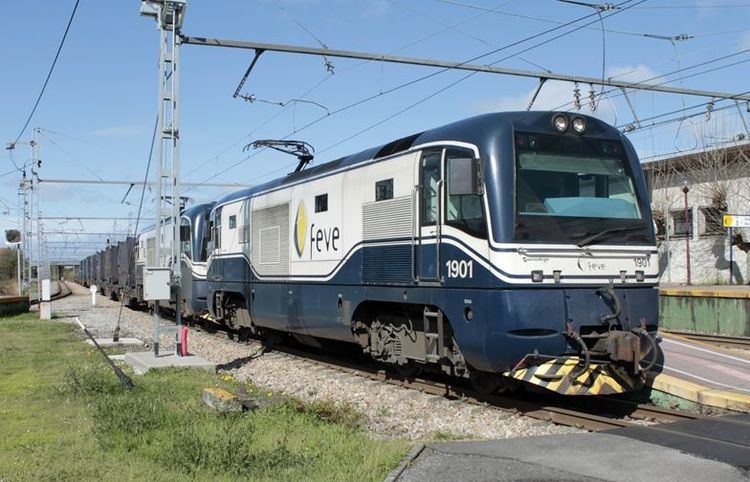 | ||
An electro-diesel locomotive (also referred to as a dual-mode or bi-mode locomotive) is powered either from an electricity supply (like an electric locomotive) or by using the onboard diesel engine (like a diesel-electric locomotive). For the most part, these locomotives are built to serve regional, niche markets with a very specific purpose.
Contents
Overview
Electro-diesel locomotives and electro-diesel multiple units are used to provide continuous journeys along routes that are only partly electrified without a change of locomotive, extensive running of diesel under the wires (using a diesel locomotive where electrified lines are available) or where diesel engines are banned. They may be designed or adapted mainly for electric use, mainly for diesel use or to work well as either electric or diesel.
Primarily electric
This is effectively an electric locomotive with a relatively small auxiliary diesel prime mover intended only for low-speed or short-distance operation (e.g. British Rail Class 73). Some of these, such as the British Rail Class 74, were converted from electric locomotives. The Southern Region of British Railways used these locomotives to cross non-electrified gaps and to haul boat trains that used tramways at the ports of Southampton and Weymouth. For economy, the diesel engine and its generator are considerably smaller than the electric capacity. The Southern types were of 1,600 hp or 'Type 3' rating as electrics, but only 600 hp as diesels. Later classes had as much as 2,500 hp on electric power, but still the same diesel engines. Despite this large difference, their comparable tractive efforts were much closer (around three-quarters as diesels) and so they could start and work equally heavy trains as diesels, but not to the same speeds.
Primarily diesel
This is effectively a diesel locomotive with auxiliary electric motors (or connections to the existing traction motors), usually operating from 750 V DC third rail where non-electric traction is banned (e.g. EMD FL9, GE Genesis P32AC-DM, EMD DM30AC). The primary function for these models is to provide a "one-seat ride" (a rail trip that doesn't require a transfer to a different train) between the electrified and non-electrified sections of a rail system or to allow trains to run through tunnels or other segments of track where diesel locomotives are generally prohibited due to their production of exhaust; such locomotives are used for certain trains servicing the New York City terminals of Grand Central Terminal and Penn Station, as the various rail tunnels into Manhattan have exhaust restrictions. Once out of the tunnels, the engines are started and operation is as a normal diesel locomotive.
Full dual-mode
With modern electronics, it is much easier to construct (or adapt) an electro-diesel locomotive or multiple-unit which is equally at home running at high speeds both "under the wires" and under diesel power (e.g. SNCF Class B 82500, ALP-45DP). These will normally operate under pure electric traction where possible, and use the diesel engines to extend the journeys along non-electrified sections which would not be cost effective to electrify. They may also be used on long cross-country routes to take advantage of shorter sections of electrified main lines.
France
Bombardier has built dual-mode variants of its AGC series for the French operator SNCF; the electricity is collected by means of a pantograph.
Germany
Italy
Poland
Russia
In Russia, a number of electro-diesels were built which had both pantographs and diesel prime movers; these locomotives were actually multiple units, with distinct electric, diesel, and motor sections. These included:
Spain
Switzerland
United Kingdom
An experimental electro-diesel locomotive, DEL120, was built by London Underground in 1940 but was not a success. Two types have been built whose electricity source was a 750 V DC third rail.
One type has been built whose electricity source is 25 kV 50 Hz AC OHLE.
The Hitachi Super Express trains being built for the electrification of the Great Western Main Line have a variant able to operate in bi-mode as an electro-diesel trainset. This will enable intercity services from Paddington Station to continue beyond Swansea station, currently the western limit of the proposed electrification scheme.
Bombardier has plans, apparently known as Operation Thor or Project Thor, to convert 500 existing diesel multiple units (DMUs) into electro-diesel multiple units (EDMUs). Whilst exact details are unclear, one source specifies that these would involve their Voyager family DEMUs, and entail the construction of additional intermediate cars with a pantograph and a transformer which would feed power into the traction motors of the existing diesel-electric cars when running off overhead lines.
United States
Several primarily diesel locomotive types and a multiple-unit have been built to operate off a 750 V DC third rail into the New York City terminals of Grand Central Terminal and Penn Station:
Canada
South Africa
The South African Class 38-000 is a 3kV DC electro-diesel locomotive designed by Consortium under the leadership of Siemens and built by Union Carriage and Wagon (UCW) in Nigel, Gauteng, South Africa. Between November 1992 and 1993 fifty of these locomotives were placed in service by Spoornet, formerly the South African Railways (SAR) and later renamed Transnet Freight Rail (TFR). The diesel engine enables the locomotive to shunt on unelectrified sidings.
Hybrid locomotive
A specialized type of electro-diesel locomotive is the hybrid locomotive. Here, the electricity comes from a battery charged by the diesel engine rather than from an external supply. An example is the Green Goat switcher GG20B by Railpower Technologies, a subsidiary of R.J. Corman Railroad Group since 2009.
